Luton Airport: Why has growth happened so fast?
Posted: 11 October 2016 | Roy Manuell, Digital Content Producer | 4 comments
In the second part of an exclusive interview with the CAPEX Director at Luton, we explore the development progress at the London airport and how passenger growth is driving Luton to become a potential major player in the UK network…
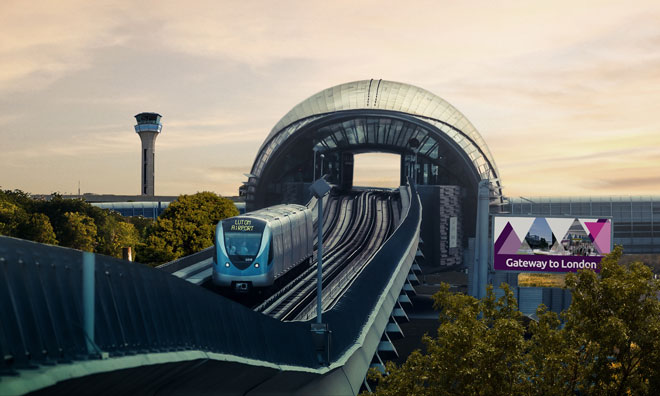

In the second of a two part analysis of the development process featuring exclusive interviews with Capex Director Alejo Pérez Monsalvo, Head of Marketing and Strategic Affairs Oliver Jaycock and Marketing Executive Jackie Bowry, International Airport Review will explore the reasons for which London Luton Airport has managed to consistently attract passenger and airline alike.
To read the first part of our Luton Airport focus, click here.
London Luton Airport has witnessed unforeseen growth over the past few years. In terms of passenger increase it has progressed from 9.7 million in 2013 to carrying 12.3 million in 2015 and is expected to welcome 18 million by 2020 and an estimated 17% of all new passengers using London airports between now and 2030.
Join us live: Shaping the Next Generation of Hold Baggage and Air Cargo Screening
Join us live for an insightful webinar on 11th December at 14:00 GMT, in collaboration with Smiths Detection, as we explore the strategic balance of operational efficiency, regulatory compliance, and sustainability in high-volume security environments.
This session offers a focused look into future-proofing your security strategy.
Key learning points
- Cost Reduction: Strategies to minimize bag travel time while simultaneously reducing operational costs.
- Regulatory Roadmap: Insights into the next wave of regulatory changes and their impact on future investment decisions.
- Sustainable Systems: Practical approaches to building sustainability into security systems and lowering the total cost of ownership (TCO).
- Scalable Solutions: Real-world examples of scalable systems supporting current airport growth and preparing for tomorrow.
Register now for expert insights, case studies, and actionable strategies on operational efficiency!
So just why has Luton managed to grow so quickly?
Well, undeniably this increase can be attributed, at least in part, to the ease Luton enjoys at attracting airlines to the London airport. With the addition of new destinations and routes to its network such as New York and Copenhagen, Luton Airport primarily offers two things:
- Compactness
- Convenience
The passenger process is very quick and efficient as discussed in the first part of our study and this is of fundamental value to airlines.
To maximise profit, what an airline desires is the quick movement and transfer of passengers from aircraft to airport and vice versa. In particular, low-cost so-called ‘budget’ airlines run their business model on the rapidity of passenger flow from destination A to destination B. With Luton Airport offering an extremely efficient passenger process time that is comfortably dwarfed by that of say Gatwick and Stansted, the Bedfordshire airport offers a lot to such airlines in terms of convenience.
That said, business class airline La Compagnie has recently pulled the plug on Luton Airport’s only transatlantic flight to New York following the uncertainty Brexit has brought. However, crucially, the airline defends its choice of Luton and says withdrawing the Luton-Newark flight in favour of a Paris-Newark route was a purely economical decision.
“Luton is also the UK’s largest private-jet base – so that’s a point of view,” La Compagnie chief executive Frantz Yvelin told FlightGlobal maintaining that, “we were satisfied with Luton. So were our passengers.”
While stereotypically seen as a hub for EasyJet and other low-cost airlines, the Aspire Airport Lounge, previously developed for La Compagnie made a statement about the airport’s business and long-haul intentions and was further praised by the Mr. Yvelin before he confirmed the superior efficiency of Luton compared to Heathrow and Gatwick with respect to customs and security as well as the all-important rail-transport time to London.
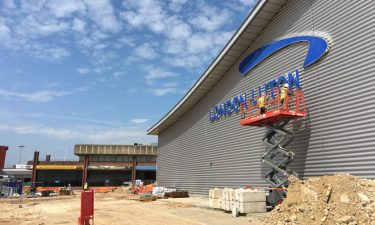

It now remains to be seen once the development enters its final period, whether or not long-haul flight routes can be attracted to Luton Airport, something that would certainly help to alleviate the burden on London’s two major airports, currently scrapping for the permission to build an additional runway.
However, Capex Director Alejo Pérez Monsalvo remains optimistic:
“It’s not just new destinations we’re attracting here but also a new demographic as different types of passengers are choosing to fly with the same airlines such as EasyJet,” perhaps a result of an overarching industry trend as low-cost travel becomes less and less stigmatised by the older generations.
“Luton Airport has one of the lowest noise violation limits in the UK…”
“We have increased the frequency of travel to the same destinations with the same airlines and much of this has been forced due to passenger demand.”
And this brings us to a more in-depth look at the Davies Report…
What is the Davies Report?
The Davies Report, established in 2012, was a fundamentally independent report commissioned by the UK government to ascertain the best means of expanding the London airports which concluded in 2015 that an additional runway would be necessary by 2030, to which both Gatwick and Heathrow responded with respective proposals.
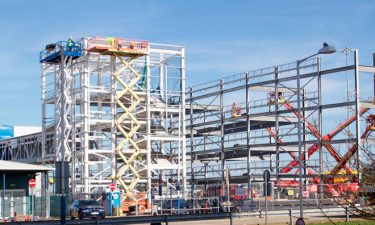

While speaking to Capex Director Alejo Pérez Monsalvo, Head of Marketing and Strategic Affairs Oliver Jaycock and Marketing Executive Jackie Bowry it became clear that Luton fully supports the report’s findings and maintained that the capacity issue currently facing the London airports is a joint problem; Heathrow currently runs at 99% of its capacity; a constraining situation that is thought to have been costing the UK economy billions a year since 2012, according to figures published by the Telegraph.
“The sooner a decision on the runway is made, the better. We just want a clear policy plan,” Oliver Jaycock asserted and with an announcement thought to be on the horizon, it looks like the new government is set to confront the issue.
That said, the report and indeed Luton Airport agree, that London’s satellite airports have an undeniably large role to play in aiding the alleviation of this burden and the team at Luton argue that while perhaps passenger experience and the general flow of the airport has been inadvertently affected by the lengthy construction process, Luton Airport is leading the way in taking the initiative by monumentally expanding for the good of the London and indeed the UK capacity constraint issue.
“It’s not just new destinations we’re attracting here but also a new demographic…”
“There is a real imperative on London to consider all its airports’ growth to solve the issue,” Jackie Bowry concluded.
In addition to this, with a healthy catchment area in terms of both population numbers as well as its wealth, Luton Airport is perfectly placed to serve several counties that are otherwise, reasonably-poorly linked to a large airport in Luton’s absence, such as Buckinghamshire, Cambridgeshire and Essex.
Further to this, in an excellent study conducted by Oxford Economics, it is thought that Luton Airport will allegedly be supporting 37,700 jobs by 2030, an increase of 10,000 from today as well as a 77% increase in its value to the UK economy as a result of expansion thus reaching an overall figure of £2.3bn by 2030.
Its aim: to distribute prosperity to the north and east of London as Gatwick and Heathrow have to the south and west.
All this economic and material expansion is great, but how will it affect the surrounding environment?
“We don’t operate in a bubble” replies Alejo Pérez Monsalvo.
“We are consistently working with the Luton Borough Council and wider community to ensure that we keep noise pollution, soil quality and water drainage to an acceptable level of quality.
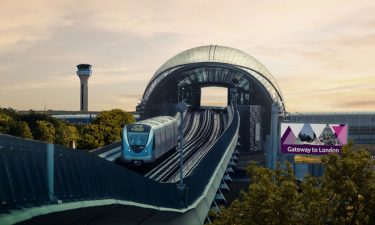

“If this means working with a wide range of consultants, so be it.”
“Consequently, Luton Airport has one of the lowest noise violation limits in the UK…” reports Oliver Jaycock.
What becomes clear as the team describe what is being done is that there is a clear environmental strategy and policy in place to minimise and mitigate any possible environmental impact the extensive expansion and development of London Luton Airport might have.
Having spoken at length to the development team at the airport as well as enjoying a guided tour around the site by Jackie, what is clear that the site is bustling with ambition and energy.
While current disruption may be a small side effect for passenger experience, for the good of London with respect to its capacity polemic and the exponential influx of passengers to the airport as well as having an economic benefit for the local area, the development of Luton Airport seems necessary and what can’t be denied is that it is well on its way to completion ahead of schedule… Good news all round.
Join our free webinar: Transforming Airport Security – Innovation, Impact, and the Passenger Experience
The landscape of airport security is undergoing a profound transformation, driven by evolving threats, technology, and passenger expectations. This webinar focuses on how AtkinsRéalis has been transforming security processes at some of the world’s busiest airports with smarter, more adaptive solutions.
Date: 4 Nov | Time: 14:00 GMT
REGISTER NOW TO SECURE YOUR SPOT
Can’t attend live? No worries – register to receive the recording post-event.




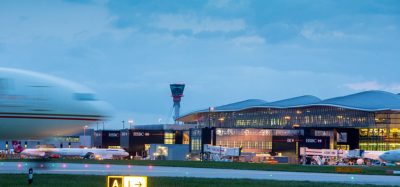
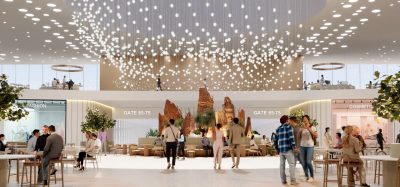

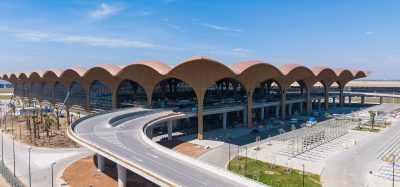











These two articles are great PR spin for the airport, but only tell half the story. Once would expect balanced journalism to be enquiring about the impacts of such rapid expansion. The passing references to noise violation limits and environmental strategy are simply that: say the magic words and move quickly on. The truth is rather different.
Luton Airport has a shorter runway than say Heathrow, so it’s not used by wide-bodied very noisy aircraft, therefore its noise violation limits will naturally be comparatively lower. But compared to the noise of the aircraft which use Luton, the violation limits are still set so high that on average only one flight in 4,000 is fined for a noise violation. That’s hardly an incentive for quieter planes. And when in 2013 a planning condition was imposed to set violation limits by aircraft category, the Airport applied to its owner, the local planning authority, to have that condition replaced by single day and night limits. Again, hardly an incentive to use quieter types or to fly aircraft in the quietest way.
As to the environmental strategy, the truth is that very little by way of noise mitigation has been delivered despite the promises made in 2013. In fact, the revers has happened:
1) the fleet mix has shifted towards larger, heavier aircraft: less quieter A319s, more noisier A321s
2) only around 2% of the flights at present are flown by aircraft with slightly quieter neo engines
3) a neo may be say 15% more fuel efficient, but Luton’s flights increased by 16% from 2016-17 so no carbon emissions offset there then
4) the Airport’s attempts to introduce an airspace change to increase the altitude of flights on its single (at present) RNAV route to offset the intense noise concentration has been declared “unworkable” by NATS
5) the number of flights on that RNAV route has increased by around 90% over 5 years – a huge increase in environmental impact for anyone living under or near it
6) Luton Airport has breached its night noise contour planning condition limit for the past 2 years and is set to breach it again this summer, and rather than scale back operations to work within the limit, it is applying for the limit to be set aside for 5 years
7) instead of regulating capacity growth to match mitigations, the airport has been incentivised by its owner, and in turn has incentivised the airlines, such that the permitted passenger limit has been reached in half the originally projected time and ahead of delivering the balancing mitigations, hence greatly increasing the noise impact on local residents and running ahead of fuel more efficient engines
We in the local community groups would be more than happy to have Roy Manuell visit again to learn more about the other side of the story so that a third and fourth article in this entertaining series can be produced. It is, after all, only fair and reasonable that both sides of this difficult coin are portrayed.
These articles are unbalanced and make scant or no reference to the very considerable suffering of local residents. They also miss one important point as to why Luton Airport has been able to grow.
To be clear, an important reason as to why Luton Airport has expanded so quickly is because the airport owner, Luton Borough Council, has approved planning applications for expansion. It is motivated so to do because it has much to gain in terms of financial benefit from the value of the operating lease granted to the airport operators, London Luton Airport Operations Limited. Bluntly put, the more that LBC, as local planners and airport owners, have allowed the airport to expand, the more LBC should be able to earn from the lease to LLAOL.
In so doing, it is convenient for LBC to largely ignore the undoubted and very significant noise and environmental pollution effects of the rapidly increasing airport operations.
In this respect, it is important to note that it is the residents of Hertfordshire that suffer most from these environmental effects, whilst the residents of Bedfordshire, in which Luton airport and LBC are based, gain from the financial benefits.
In summary, one of the main reasons that the airport has been able to expand is because LBC is in a position whereby it can take advantage of a gross conflict of interest. LBC can act as a very well remunerated judge and jury.
This article was written in 2016. Now, 2019, it is startling to see how that aspirational image has been shattered. Consistently voted by passengers as the UK’s worst airport in just about every survey, and failing to deliver on environmental promises. Back in 2013, when the airport began it’s current expansion program, the promise was “A key issue for LLAOL is to minimise and manage all noise but in particular night noise. Future aircraft operations are likely to be inherently less noisy as a result of re-engining of the fleet at Luton, in particular the Boeing 737 and Airbus A320 family of aircraft”.
In reality, Luton Airport breached the night noise planning condition in 2017, again in 2018, and has predicted that it will do so again in 2019.
In that same Masterplan document, the operator says “There is no benefit in overinvesting, since the excess cost of doing so will not be recoverable from airlines or passengers”
They have been true to their word in this statement at least.
It also offers utter misery for those of us living under its flight path. Noise and air pollution, disrupted sleep. A virtually perpetual droning that has our wild birds straining to be heard and in fact are now noticeably louder themselves to compete.
Friends and family that visit in our Covid friendly gardens also battle to be heard or speak above the now increasingly frequent air ripping take off and landings.
Sometimes the effort is too much and we’re all forced into recuperative silences.
If the expected growth takes place I can’t even imagine how much worse it could get?
This is no longer a green and pleasant land, it’s a polluted, noisy, stressful land.